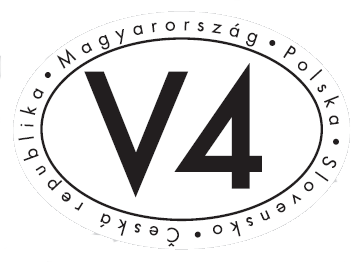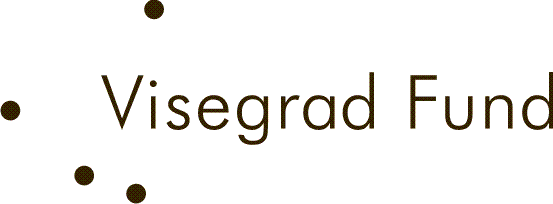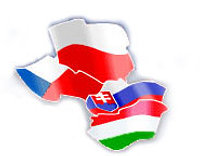Project Publications
| Book 1 | Book 2 | Book 3 | Book 4 | Book 5 | Book 6 | conference articles in journals |
Grodzicki, M. J. (2014). Global Value Chain and Competitiveness of V4 Economies (chapter 1) In: D. Kiendl-Wendner & K. Wach K. (Eds.), International Competitiveness in Visegrad Countries: Macrto and Micro Perspective. Graz: Fachhochschule Joanneym (ISBN: 978-3-200-03673-4).
Full text: pdf (free download)
Abstract
The paper aims to investigate the competitiveness of V4 economies from a new angle, related to fragmentation of global value chains (GVC). In the paper, a new methodology of analysing competitiveness of economies, developed by Timmer et al. (2012), was employed. Making use of World Input-Output Database, a value of GVC income of particular industries in V4 economies in 1995-2010 was calculated. Then, a thorough examination of computed values was conducted, in order to observe evolving openness, revealed comparative advantages (RCA) and position of V4 economies in the GVC. V4 economies since 1995 have become increasingly integrated in global value chains. On the one hand, they have imported more and more intermediate inputs for manufacturing industries. On the other, their contribution to GVC production have steadily increased. Although some tendencies were common for all V4 countries, some significant differences were detected as well. Firstly, level of integration into the GVC varied: Poland, probably due to size of the economy, is to a least extent dependent on participation in GVC, either by imports of by exports; while Hungary is the leader in both categories. Czech Republic, Slovakia and Hungary managed to develop RCA in capital-intensive and high-tech industries. Conversely, Poland finds it comparative advantage still predominantly in resource-based industries. Employment of a relatively new research technique sheds new light on the processes of integration of V4 into global economy. Comparison of our results with traditional ones, based on raw exports and imports data points to some important differences. So far, at least to our knowledge, no analysis like this for V4 has been performed.
Keywords: manufacturing, global value chain, input-output analyses, competitiveness, CEE
JEL classification: F60, O47, O57
References
Baláž, V. (2013). How to avoid becoming the
Detroit of Europe? Available from
Baldone, S., Sdogati, F. & Tajoli, L. (2001). Patterns and Determinants of International Fragmentation of Production: Evidence from Outward Processing Trade between the EU and Central Eastern European Countries. Weltwirtschaftliches Archiv, 137(1), pp. 80–104.
Baldwin, R. (2006). Globalisation: the great unbundling(s). Office of the Prime Minister of Finland, Helsinki.
Baldwin, R. (2009). Integration of the North American Economy and Newparadigm Globalization. CEPR Discussion Papers, no. 7523.
Bussiére, M., Fidrmuc, J., & Schnatz, B. (2005). Trade integration of Central and Eastern European countries. Lessons from a gravity model. ECB Working Paper Series, no. 545.
Fertö, I. & Soós, K.A. (2008). Trade Specialization in the European Union and in Postcommunist European Countries. Eastern European Economics, 46(3), pp. 5–28.
Fortwengel, J. (2011). Upgrading through Integration? The Case of the Central Eastern European Automotive Industry. Transcience Journal, 2(1).
Gereffi, G. (2005). The Global Economy: Organization, Governance, and Development. In: N.J. Smelser & R. Swedberg (eds),The Handbook of Economic Sociology, Princeton: Princeton University Press, pp. 160–182.
Hausner, J. (2014). Budujemy zamki na pustyni,
interview by M. Sutowski, 07.01.2014. Available from
Hotopp, U., Radosevic, S. & Bishop, K. (2002). Trade and Industrial Upgrading in Countries of Central and Eastern Europe: Patterns of Scale and Scope-based Learning., University College London, Centre for the Study of Economic and Social Change in Europe Working Papers, no. 23.
Hummels, D., Ishii, J. & Yi, K.M. (2001). The Nature and Growth of Vertical Specialization in World Trade. Journal of International Economics, 54(1), pp. 75–96.
Jacoby, W. (2010). Managing globalization by managing Central and Eastern Europe: the EU’s backyard as threat and opportunity. Journal of European Public Policy, 17(3).
Jakab, Z.M., Kovács, M.A. & Oszlay, A. (2000). How far has trade integration advanced? An analysis of actual and potential trade of three Central and Eastern European countries. NBH Working Paper, no. 1/2000.
Jones, R.W. & Kierzkowski, H. (2005). International fragmentation and the new economic geography. The North American Journal of Economics and Finance, 16(1), pp. 1–10.
Kaminski, B. & Ng, F. (2005). Production disintegration and integration of Central Europe into global markets. International Review of Economics and Finance, 14, pp. 377–390.
Koopman, R., Powers, W., Wang, Z. & Wei, S.J. (2010). Give Credit Where Credit Is Due: Tracing Value Added in Global Production Chains. NBER Working Papers, no. 16426.
Krugman, P. (1991). Increasing Returns and Economic Geography. Journal of Political Economy, 99, pp. 483–499.
Lanz, R., Miroudot, S. & Nordås, H.K. (2011). Trade in Tasks. OECD Trade Policy Papers, no. 117.
Nölke, A. & Vliegenthart, A. (2009). Enlarging the Varieties of Capitalism. The Emergence of Dependent Market Economies in East Central Europe. World Politics, 61(4), pp. 670–702.
Parteka, A. & Wolszczak-Derlacz, J. (2011). Market Size, Competitiveness and Technological Frontier - the Impact of Trade Integration with the UE on Productivity in Polish Manufacturing Sectors., National Bank of Poland Working Paper, 82.
Stehrer, R., Borowiecki, M., & Dachs, B. (2012). Global Value Chains and the EU Industry. wiiw Research Reports, no. 383.
Timmer, M.P., Los, B., Stehrer, R. & de Vries, G.J. (2012). Fragmentation, incomes and jobs: an analysis of European competitiveness. Economic Policy, 28(76), pp. 613–661.
Timmer, M.P. (ed.) (2012). The World Input-Output Database (WIOD): Contents, Sources and Methods. WIOD Working Paper, no. 10.
Yeats, A.Z. (1997). Just How Big Is Global Production Sharing?. World Bank Policy Research Paper, No. 1871.
Zaghini, A. (2005). Evolution of trade patterns in the new EU member states. Economics of Transition, 13(4), pp. 629–658.
Czech Republic
Hungary
Poland
Slovakia

Contact:
Dr hab. Krzysztof Wach
Cracow University of Economics
wachk@uek.krakow.pl
www.wach.uek.krakow.pl

